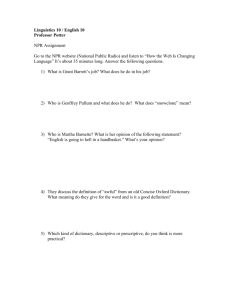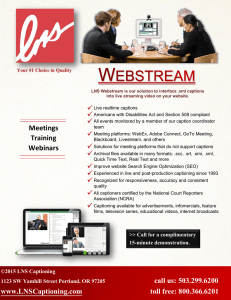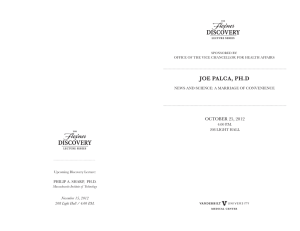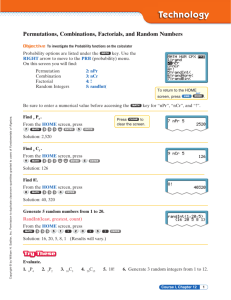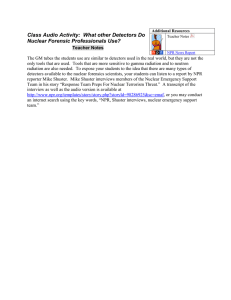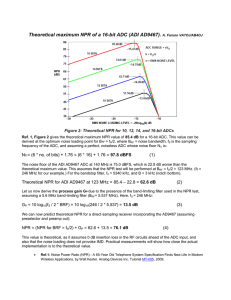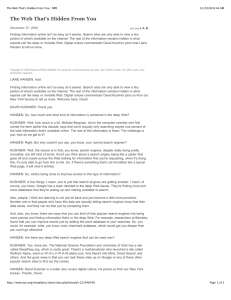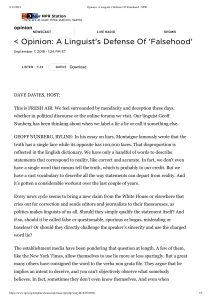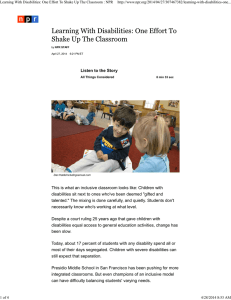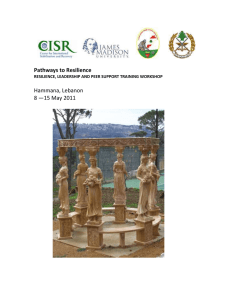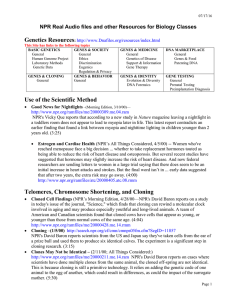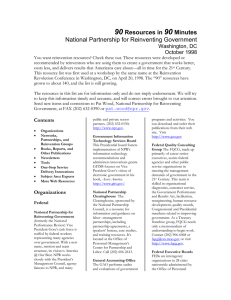Abstract “Making Media Accessible to all: the options and the economics”
advertisement
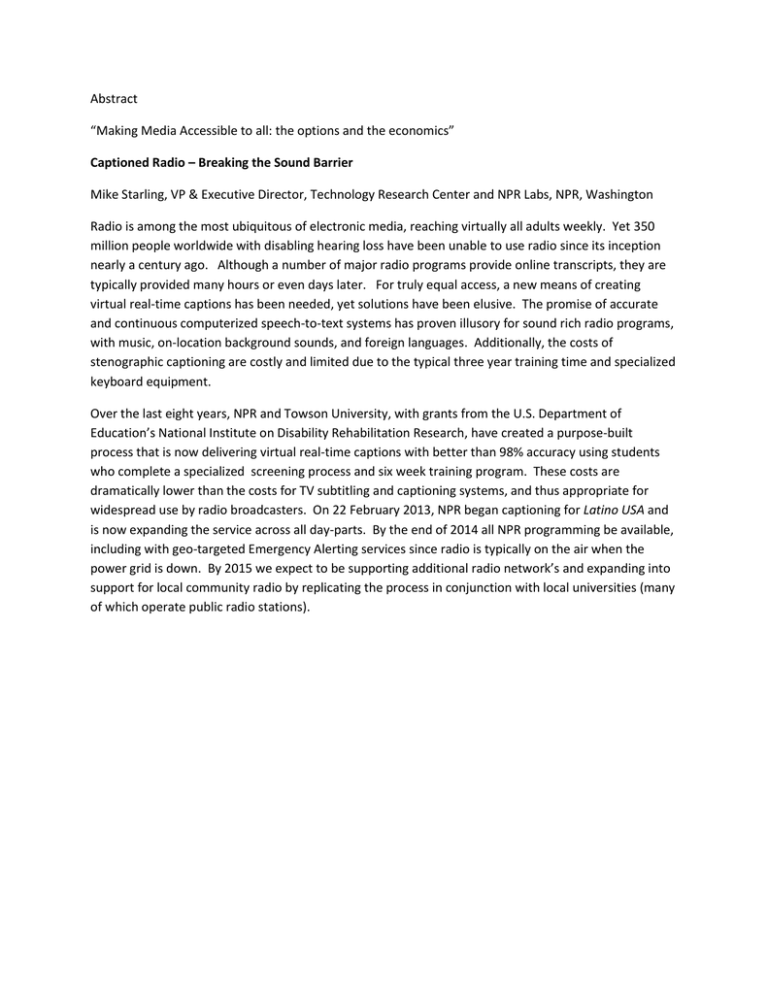
Abstract “Making Media Accessible to all: the options and the economics” Captioned Radio – Breaking the Sound Barrier Mike Starling, VP & Executive Director, Technology Research Center and NPR Labs, NPR, Washington Radio is among the most ubiquitous of electronic media, reaching virtually all adults weekly. Yet 350 million people worldwide with disabling hearing loss have been unable to use radio since its inception nearly a century ago. Although a number of major radio programs provide online transcripts, they are typically provided many hours or even days later. For truly equal access, a new means of creating virtual real-time captions has been needed, yet solutions have been elusive. The promise of accurate and continuous computerized speech-to-text systems has proven illusory for sound rich radio programs, with music, on-location background sounds, and foreign languages. Additionally, the costs of stenographic captioning are costly and limited due to the typical three year training time and specialized keyboard equipment. Over the last eight years, NPR and Towson University, with grants from the U.S. Department of Education’s National Institute on Disability Rehabilitation Research, have created a purpose-built process that is now delivering virtual real-time captions with better than 98% accuracy using students who complete a specialized screening process and six week training program. These costs are dramatically lower than the costs for TV subtitling and captioning systems, and thus appropriate for widespread use by radio broadcasters. On 22 February 2013, NPR began captioning for Latino USA and is now expanding the service across all day-parts. By the end of 2014 all NPR programming be available, including with geo-targeted Emergency Alerting services since radio is typically on the air when the power grid is down. By 2015 we expect to be supporting additional radio network’s and expanding into support for local community radio by replicating the process in conjunction with local universities (many of which operate public radio stations).
